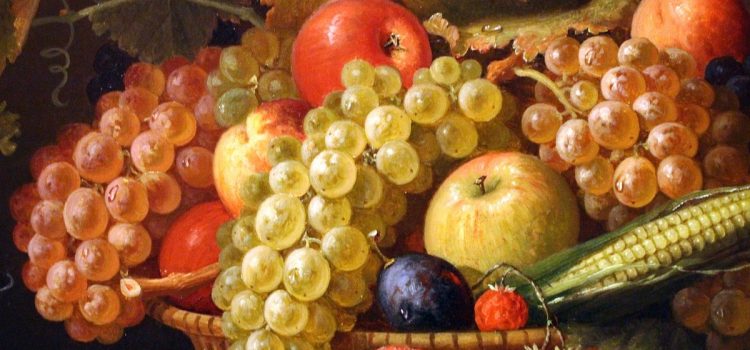

This article is an excerpt from the Shortform book guide to "Ways of Seeing" by John Berger. Shortform has the world's best summaries and analyses of books you should be reading.
Like this article? Sign up for a free trial here .
What can we learn from European art history? How has art shaped social order?
According to art critic John Berger, throughout history, the way we see art has been manipulated by a privileged minority to preserve their social and economic dominance. He argues that understanding the dominant form of art from this period in Europe is key to understanding Western history and social order.
Keep reading to learn more about Berger’s ideas.
“The Tradition”
The primary topic Berger discusses in Ways of Seeing is the European tradition of oil painting, which he says occurred between the years 1500 and 1900. This is not a defined period of European art history because there were several movements that occurred within it (Romanticism and Realism to name two), yet Berger recognized that this is a distinct period with overlapping norms, hence his classification of the medium and time period as a “tradition.”
While oil painting took off at the beginning of the Renaissance (around the year 1400), Berger argues that the artistic norms of this time period were not fully established until the beginning of the 16th century. The norms continued until Impressionism and Cubism took over at the turn of the 20th century.
The technique of oil painting (mixing pigment with oils to create a medium) was around long before the Renaissance, but it became an art form during this period because, for the first time, there was a need to develop and perfect the technique. This need was primarily due to the subjects being depicted: food, pedigreed animals, expensive objects, land, and so on. Tempera and fresco paintings couldn’t produce the intense realism that oil painting could, so to depict these subjects in a way that essentially placed them in the room—the desired effect—oil painting was necessary.
| Why Oil Paints Are the Best Medium for Realistic Paintings Berger states that tempera and fresco paintings weren’t realistic enough to satisfy the artistic desires of this time period. What made oil paints a superior medium for this purpose? Tempera is an egg-based paint that produces muted colors and dries very quickly. Fresco painting is the process of using watercolor paints on wet plaster, which also dries quickly. In both of these mediums, the artist doesn’t have the luxury of taking his time. He also has less control over the paint and mistakes are difficult to fix. Oil paints, on the other hand, have an extremely long drying time—depending on the solvent used to thin the paint, it can take days, weeks, months, or even years in some cases, to fully cure. This allows the artist to work very slowly and deliberately. The texture of oil paints lends them well to blending, which can produce seemingly infinite shades of color. Unlike other mediums, the colors of oil paints are vivid and saturated, which allow them to be layered on top of one another to create depth and texture, as well as fix mistakes. |
Norms of the Tradition: Oil Paintings as a Depiction of Wealth
Berger argues that European oil paintings from 1500-1900 were almost entirely focused on displaying wealth. He explains that oil painting rose to prominence beginning with the Renaissance largely because of its ability to accurately depict tangible items. This made it an excellent medium for depicting subjects that represent wealth and power:
- Expensive objects
- Feasts
- Pedigreed animals
- Land ownership
- Portraits
- Mythology
- Genre paintings
- Colonization
- Nudes
| The Hierarchy of Genres There are ranking systems that exist for genres of the European oil painting tradition, which sorts categories of art forms in terms of value. The first hierarchy of genres was established in 1667 by Andre Felibien, a theoretician of French classicism. He ranked the categories in the following order, from most to least valuable: —History paintings: Paintings with mythological, religious, historical, or literary subjects. The paintings must contain an intellectual or moral message. —Genre paintings: Paintings depicting everyday life. —Portraits —Landscapes —Still lifes |
Expensive Objects
Consider this painting by Holbein. If you look closely at what is being depicted, it oozes wealth. Berger describes to us the materials being displayed: marble, velvet, fur, and silk, among others. The men display their privilege through items like books, globes, scientific tools, and musical instruments—symbols of the educated class.
Berger explains that traditionally, art critics explain paintings such as this in terms of technical mastery. The brushstrokes required to accurately depict velvet are quite different from that of marble, or of a human face for that matter. While technical analysis has its value, Berger acknowledges, what is too often missing (mystified) from analyses is what is plainly before our eyes: These men surrounded themselves with their most expensive and class-validating possessions and hired an artist (Holbein) to paint them. And this was the norm. Why? That is the question that Berger urges us to consider.
THE AMBASSADORS BY HOLBEIN 1487/8-1543
| Achieving Texture With Oil Paints Berger describes how Holbein painted the textures of velvet, marble, fur, silk, wood, and metal all in one painting. How is this achieved? Most artists agree that experimentation is the best way to learn about texture. Start by playing with the following factors: Brush type: Stiffer bristles are more appropriate for applying thick paint, while thinner more delicate brushes can be used for thin applications. Pallet knives: Instead of using a brush, you can apply paint with a pallet knife to achieve a “frosted cake” look. Brush stroke: Dabbing, swooping with pressure, lightly sliding, and so on, all produce different looks on the canvas. Viscosity of the paint: For thick texture (impasto), use the paint straight out of the tube with no medium to thin it. For thinner paints, add a solvent, such as turpentine or mineral spirits. Don’t add too much or your paint will become soapy. Dry mediums: Try adding sand, pumice, or glass beads to your paint to add an unexpected texture. Use a pallet knife or disposable brush when applying this, as it can ruin your good paintbrushes. |
Food, Pedigreed Animals, and Land Ownership
Just as expensive objects represent wealth, so did great feasts, expensive pedigreed animals, and ownership of land. These were things that the working class didn’t have, and the wealthy elite who commissioned paintings were proud to have them. Berger says that thousands of paintings from the tradition fell into one of these categories. Here is an example of each:
STILL LIFE WITH A LOBSTER BY DE HEEM 1643
(Shortform note: Cornell University conducted a study of more than 750 Western food paintings from the years 1500 to 2000, similar to the years Berger discusses. They agree with Berger’s assessment that paintings of feasts were intended to cause envy and display social status. They added that the foods displayed were often exotic, native to non-Western lands. Fruits were also heavily featured, when in reality vegetables were much more readily available. The study authors warn art lovers to not use these images as a historical record of what was actually eaten at the time; rather, liberties were taken in order to appear as elite as possible.)
LINCOLNSHIRE OX BY STUBBS 1724-1806
(Shortform note: Many modern art historians say that animals appear in Renaissance paintings as metaphors. Ermines, dogs, birds, and rabbits are listed as recurring animals in religious and secular paintings. Livestock, particularly pedigreed livestock, is not listed among them—which begs the question, is it possible that the ox in this painting is symbolic? Or is it simply an expensive animal standing next to a wealthy man as a display of ownership?)
HENEAGE LLOYD AND HIS SISTER, LUCY BY GAINSBOROUGH 1727-1788
(Shortform note: Gainsborough is heralded as being a master of the portrait and the landscape, but we can infer that Berger would disagree with this assertion. Berger argues that landscapes are natural features that are not owned. If you look closely at Gainsborough’s landscapes, nearly every one shows the landowner standing proudly within it. The J. Paul Getty museum website also describes landscapes as being the “natural world,” but provides examples that include human structures upon them. We can gather that the nuanced definition of a landscape is still up for debate.)
Mythology
According to Berger, paintings of ancient myths and religious stories were the most respected category of painting. Because the wealthy elite were educated, they were the minority in society who had access to these myths. But instead of inspiring their wealthy owners to live up to the morality depicted in the paintings, Berger says the paintings instead served only to confirm its owners’ high perception of themselves because they were educated enough to know the stories being told.
Shortform Commentary: A Modern-Day Mythological Painting—Leda and the Swan
Painted in 1962 as one of a set of six, Leda and the Swan is a modern-day mythological painting by Cy Twombly. It’s immediately apparent that this painting is done in a different style than the mythological oil paintings of the European tradition, yet it meets the criteria of the genre. The painting is based upon the Greek story of Zeus seducing Leda by taking the form of a swan. This particular painting sold for over $50 million in 2017, demonstrating that the market value for this genre still tops the hierarchy list previously discussed. Another member of this set currently resides at the Museum of Modern Art in New York City.
Genre Paintings
“Genre” paintings were the opposite of mythological images. Rather than depicting morality and virtue, the genre paintings depicted unrefined vulgarity. The subjects of these paintings were the working class—nameless individuals going about their lives. The genre paintings that follow the tradition depict the working class as poor, but happy. Often, the subject is even smiling outward at the viewer of the painting, presumed to be a member of the bourgeoisie. Berger says this depiction isn’t realistic, but that it kept the wealthy from feeling guilt about their privilege (mystification).
(Shortform note: Many of the masters of the “genre” genre came from the Netherlands, including Vermeer and Steen. The most common scenes depicted included social events, daily pleasure, soldier life, and scenes of drunkenness.)
Colonialism
Just as myth paintings assured elites that they too were moral and therefore deserving of their wealth, paintings that depicted colonized people and places reminded elites that (in their view) their culture was superior and therefore justified violent conquest. Berger explains that the painting in itself (a commodity) and the subject it depicted both contributed to this view.
THE EAST OFFERING ITS RICHES TO BRITANNIA BY SPIRIDIONE 1737-1781
| Ways of Seeing and Postcolonial Theory Postcolonial theory is a body of thought that claims we cannot understand the world we live in without considering how imperialism and colonial rule has shaped it. “Post” is added to the word colonial because it primarily focuses on colonialism from the 18th to 20th centuries, but the theory doesn’t imply that colonialism has ended. Postcolonial theory emerged in the 1980s as part of a larger conversation that includes feminism and critical race theory. The theory is not so much a set of beliefs as much as it is a lens from which to view history. |
Nudity and Objectivity
Nude women were a prominent subject in European oil painting. Berger points out that in the same way oil paintings depicted wealth using images of land and objects, women were also seen as property to be flaunted. Nudes, Berger says, are characterized by the objectification of the female “subject,” who through the assumed gaze of the male viewer is made into an object.
Nude women in European oil paintings appear for the benefit and use of the assumed male viewer, who Berger calls the “spectator-owner.” He calls them this because the man who owns the painting “owns” the nude woman, and (in his mind) he’s also the reason why the nude woman is there—to display herself for him, the spectator.
(Shortform note: According to Berger, the nudes of the oil painting tradition were highly focused on the spectator-owner and featured the male gaze within the paintings as well. Today’s nudes are less focused on being desirable, and more focused on breaking taboos. In many examples, the woman touches her own body and exudes a sexuality that up until recently was viewed as a character flaw. Since the “Me Too” movement of 2017, women have moved toward unapologetically embracing their sexuality and rebelling against the historical objectivity of their bodies.)

———End of Preview———
Like what you just read? Read the rest of the world's best book summary and analysis of John Berger's "Ways of Seeing" at Shortform .
Here's what you'll find in our full Ways of Seeing summary :
- Why we don't need experts to "translate" works of art for us
- How the dominant class uses art and art criticism to “mystify” the working class
- How our experiences and beliefs influence what we see






